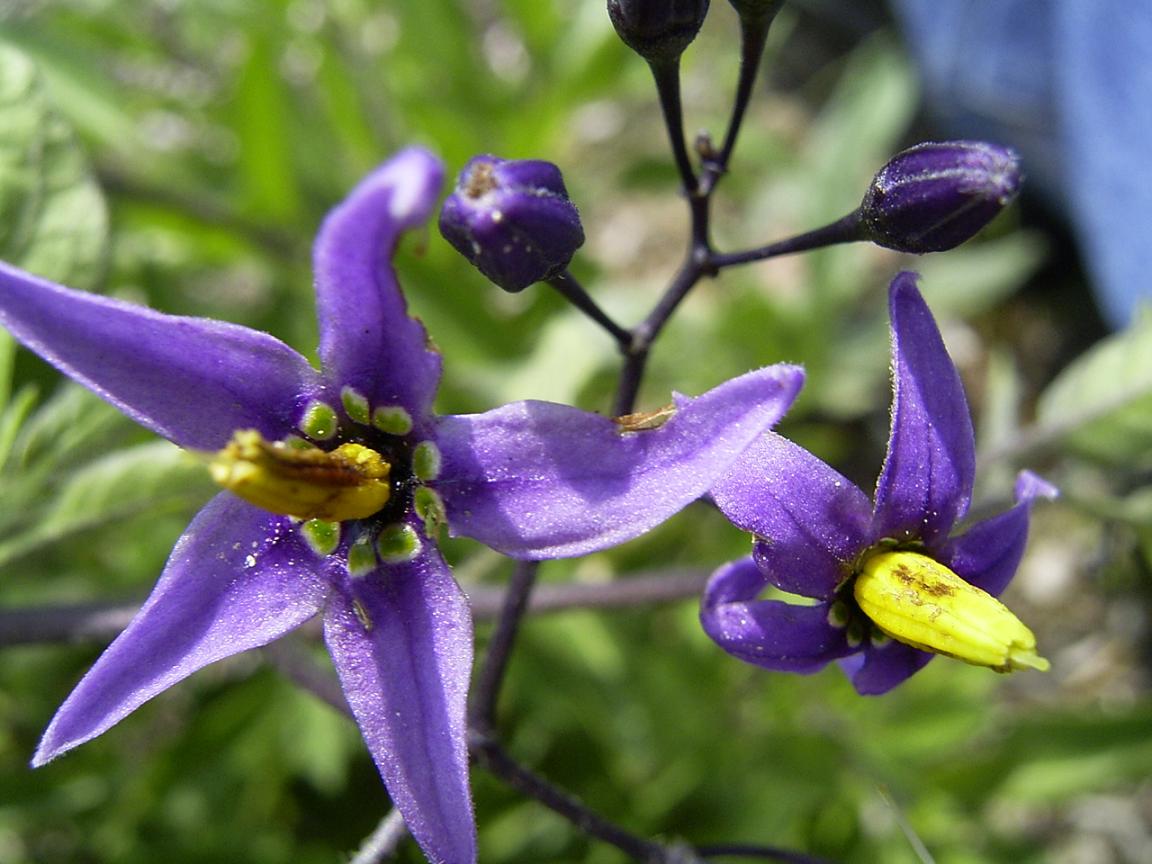
It occurs in a very wide range of habitats, from woodlands to scrubland, hedges and marshes. It is an invasive species in the Great Lakes region and was first spotted in 1843.
Bittersweet is a semi-woody herbaceous perennial vine, which scrambles over other plants, capable of reaching a height of 4 m where suitable support is available, but more often 1–2 meters high.
The leaves are 4–12 cm long, roughly arrowhead-shaped, and often lobed at the base. The flowers are in loose clusters of 3–20, 1–1.5 cm across, star-shaped, with five purple petals and yellow stamens and style pointing forward. The fruit is an ovoid red berry about 1 cm long, soft and juicy, with the aspect and odor of a tiny tomato, and edible for some birds, which disperse the seeds widely.
It is native to northern Africa, Europe and Asia, spreading throughout the world. The plant is relatively important in the diet of some species of birds such as European thrushes[citation needed] that feed on its fruits and are immune to its poisons, scattering the seeds abroad. It grows in all types of terrain with a preference for wetlands[citation needed] and the understory of riparian forests. Along with other climbers, it creates a dark and impenetrable shelter for varied animals. The plant grows well in dark areas in places where it can receive the light of morning or afternoon. An area receiving bright light for many hours reduces their development. It grows more easily in rich wet soils with plenty of nitrogen.
No comments:
Post a Comment